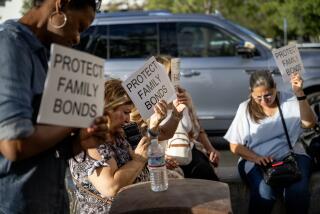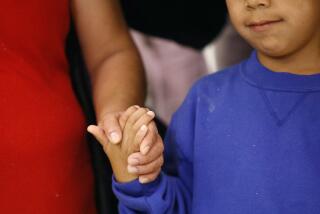Spanning the Kinship
- Share via
I feel compelled to elaborate on Constance Ahrons’ comments in the Times’ View Section of Nov. 11 (“Reassessing the Nuclear Family” by Elizabeth Mehren).
Ahrons states, “For most people . . . the divided family is a continuing kinship system.” It has to be. Children are the bridge that spans that kinship, joining parent to parent, like it or not. As she points out, there is a variety of ways in which adults act out that system. There is also a variety of ways in which children respond to the adult behavior. Ignoring the existence of that relationship performs what Dr. Frank Williams of Cedars-Sinai Thalians Clinic calls a “parentectomy.” The patients undergoing such surgery are the children, and they are often left crippled for life.
Ahrons rightfully points out that the use of the term “single parent” does indeed “rob” a child of one parent. It is confusing to youngsters: one parent is wiped out by the mere existence of the other, the “single parent.” Good, bad or indifferent, available, attentive or absent, the non-custodial, non-designated parent cannot and ought not be made to vanish from a child’s life.
Friends, family, well-wishers--all of us must reassess our definition of the family, as Ahrons suggests, and reexamine our attitudes. No longer should we refer to separated and divorced households as “broken” homes; we have learned that the only things that can be broken are hearts. So, too, we must no longer refer to “single parents” when, in truth, a child has two parents. Two parents, living in separate households, can work together in their fashion, for the good of their shared responsibility: a beloved child.
Stereotypes must be eliminated from our thoughts and our vocabularies. The “nuclear family” as we defined it in college sociology--two parents, two-plus children, a dog and a station wagon--does exist today, but alongside of it exists a variety of family constellations which must not be ignored. The binuclear family that Ahrons discussed, “the post-divorce family that spans two households” must take its place in our understanding, consideration and acceptance, as we reform our thinking and acknowledge the changing family.
AGNES G. HERMAN
Lake San Marcos
More to Read
Sign up for Essential California
The most important California stories and recommendations in your inbox every morning.
You may occasionally receive promotional content from the Los Angeles Times.













